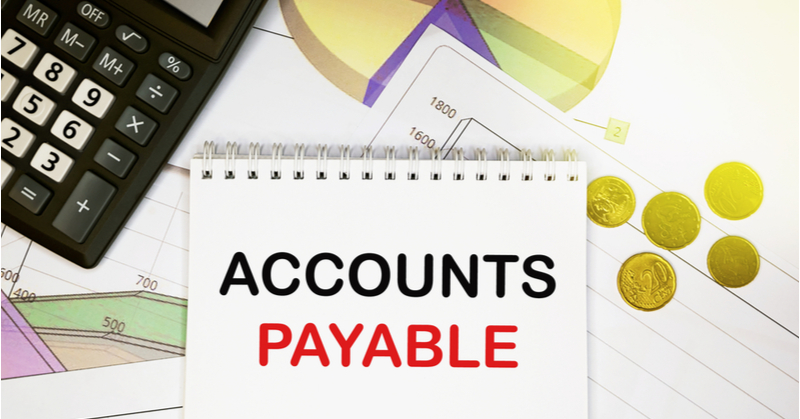Different firms handle Accounts Payable in different ways. Some firms don’t enter vendor bills until they are ready to pay them and then just write checks. Other firms enter bills as they arrive and then once or twice a month pay the bills either by check or by logging in to their bank and issuing payment directives. And still other firms have a completely electronic process from receiving bills electronically or scanning them in and then paying electronically through a service that is connected to their account software.
No matter what method is used by your firm, there are factors to consider, such as ensuring prompt payments, taking advantage of vendor discounts, tracking vendor bills to be paid, avoiding duplicate payments, preventing fraud, and saving time.
As part of the process of preventing fraud, your firm should have a process in place to make sure that all bills that come in are recorded and are legitimate business expenses. You also want to make sure that the bill has not already been paid. If a vendor is offering discounts, then you want to make sure you pay in a timely manner so that you can take advantage of the discount. You may also have situations where you don’t pay the vendor until the client/customer has paid you, something that is common in certain types of law practices. In those cases, you need to keep accurate track of what is owed and when the vendor can be paid.
At one time, in the not too distant past, there was only one way to pay your vendors – send them a check by mail. Then the banks started to offer ways for you to use the bank to pay bills electronically. An advantage of this process was you didn’t have to physically print checks (pay for the check stock) and put them into envelopes, then pay the postage and wait for them to be delivered.
The biggest disadvantage to bank electronic payments was cost – direct and indirect. The direct cost is that most banks charge for this service. The indirect cost is you lost the float time. Float time is the time from when you write a check to when the money is actually removed from your bank account. When you write the check, there are a few days for the check to be mailed, the vendor to deposit it and the bank to pay it. This could mean an extra 3 to 5 days, or more, with the money sitting in your bank account earning interest. When you pay the vendor through bank electronic payments, the money is usually withdrawn from your account immediately with the bank getting the benefit of the float time. But the convenience is usually worth it.
In recent years, several services have come into play and they replicate what the bank was doing. Many of these have no direct cost for issuing payments.
How do you choose between the services? Different services have different features, so think about what features are important to your firm, then do your research to narrow down your choices and make a selection.
Key questions to ask as you evaluate AP services
1. Who can you pay? Some services have arrangements to allow you to pay anyone including big companies like utilities and credit card companies. Others are set up to allow you to pay a more limited set of vendors. Or some vendors may be payable by direct payment (ACH) and others need to be paid by check. There may be costs associated with paying by check rather than ACH.
2. How are bills entered into the system? Some systems allow for vendor bills to be sent directly to (or forwarded to) an email address for “automatic” reading and processing. In other cases, you can upload bills by scanning or entering bills directly into the system or through your accounting software. There is no right or wrong on how bills are entered. Just make sure the process fits your firm's workflow.
3. Can you pay locally or internationally? If you have vendors outside the United States can you issue payment to them? What currency can they be paid in and does the cost vary? Veem, for example, can pay vendors in many countries in local currency or US dollars but may charge a fee for currency conversion. This fee may compare favorably with what the bank would charge, but you should be aware of the fee. There may also be different minimum amounts for payment outside the United States.
4. Which bank account is used for payment? When Bill.com issues a check, it is drawn on Bill.com’s bank account rather than your account. This is advantageous as it protects your bank account information but it may make it harder to track any problems with payments and further reduces your float time.
5. How does it integrate with your software? If you are using QuickBooks Desktop, Intuit recently announced a tight integration with Melio. While there are other choices, this does give them a distinct advantage if you are using 2022 Plus (or later). If you are using QuickBooks Online then you have a range of options.
6. Is there an approval process available? Does the software have a process where someone can enter the payments and others can approve them? Can appropriate documentation be attached to the payment record electronically to make the approval process easier? An approval process can help to reduce fraud as at least one additional person has to look at the payment. If your firm has an approval process, or would benefit from one, you want to make sure that the software can support this and that it is easy to use.
7. What kind of technical support is offered? Phone, chat, email? What are the support hours? If you are on the west coast and a service offers support 9 to 5 Eastern time, this might limit its ability to assist you at key times. Assessing the quality of support can be harder but a couple of calls to the support line before you become a customer, if possible, allows you to ask questions of the support team to assess their knowledge. Reading reviews can also help.
Nobody likes to pay bills but it is a part of running a business. There are lots of options to make the process smoother and easier. Do your research and pick a solution that will help your firm ease the pain.
.png?width=150&height=63&name=TWRlogo-regmark_blueblack%20(1).png)
.png)










Do you have questions about this article? Email us and let us know > info@woodard.com
Comments: